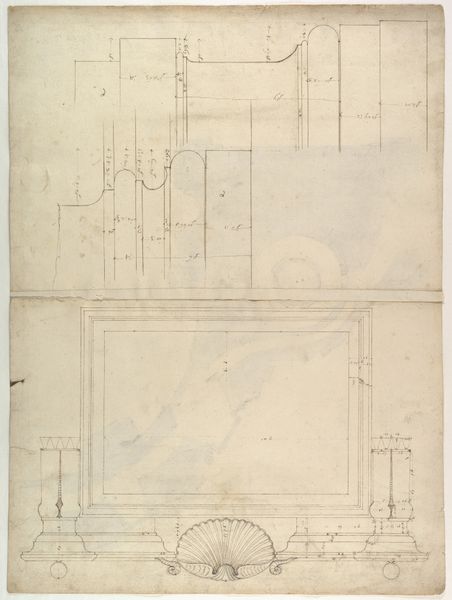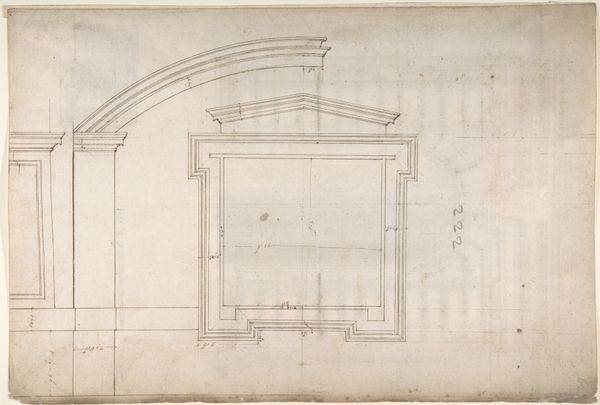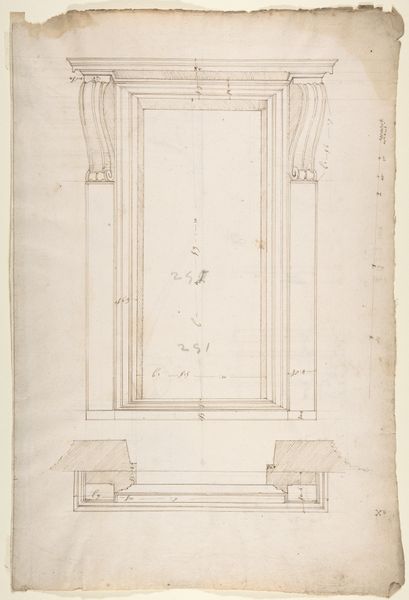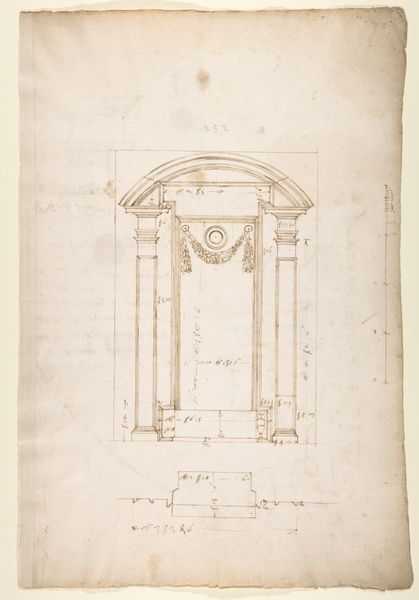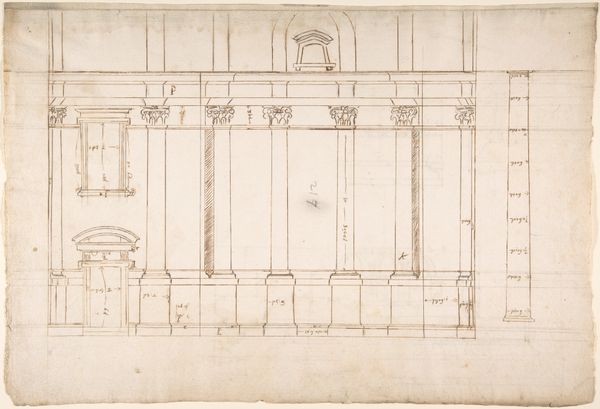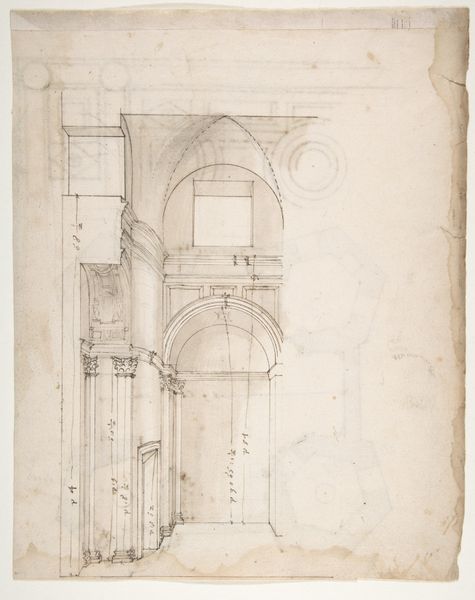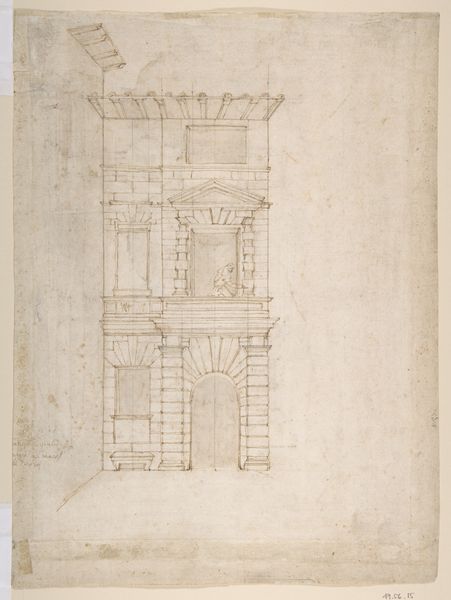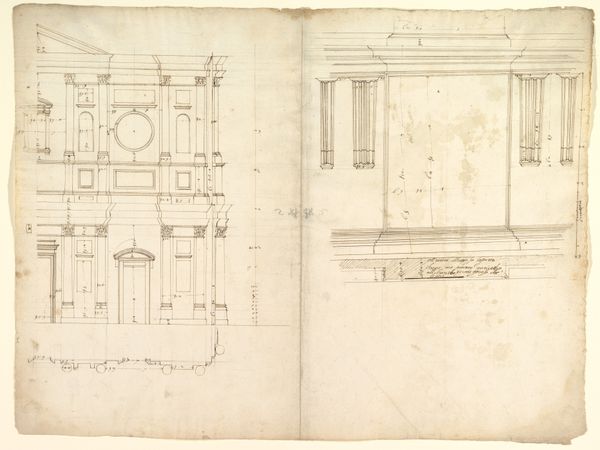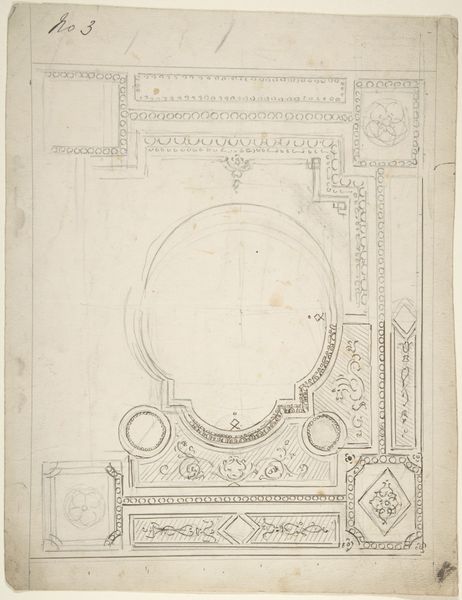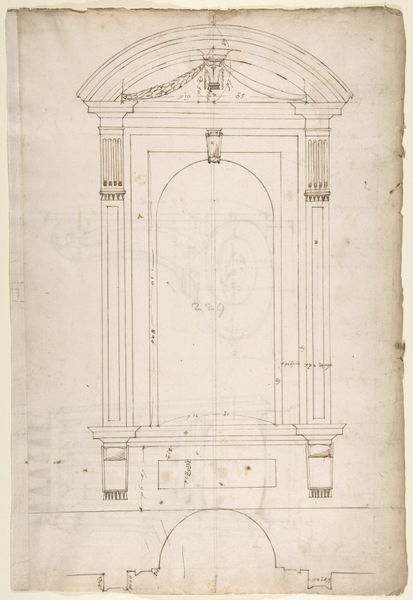
drawing, print, paper, ink, architecture
#
drawing
# print
#
paper
#
form
#
11_renaissance
#
ink
#
geometric
#
line
#
architecture
Dimensions: sheet: 17 1/4 x 11 1/2 in. (43.8 x 29.2 cm)
Copyright: Public Domain
Editor: This is an ink drawing, "Court Cupboard (side elevation)" from the 16th century. It is fascinating that someone sketched it so precisely, and I wonder about its original function. It has such a measured quality about it. What can you tell me about this drawing? Curator: The strength of this drawing lies in its formal structure, wouldn’t you agree? Note the repetitive use of geometric forms and the clear delineation of line. The artist employed these elements to create a blueprint, one could say. The careful consideration of proportion and balance elevates this from a mere diagram to something aesthetically compelling. Do you notice any specific relationships between the geometric elements? Editor: Well, the rectangles, of course, but also how circles are incorporated into each corner. It's very ordered. So, you're suggesting its artistic merit resides in how the components work together as opposed to what it depicts? Curator: Precisely. Consider the composition: the careful placement of each line contributes to the overall visual harmony. The linear style emphasizes form over illusionistic depth. Are we looking at an interpretation or technical instruction manual, or are both intentions present within the paper? How does the choice of ink as a medium inform your understanding? Editor: It's interesting to consider that it is not meant as art. To think about architecture existing as pure form like this helps to appreciate a building's basic shapes. It all starts here. Thank you. Curator: Indeed. It invites us to appreciate the intrinsic beauty of line and form, a foundational element for the design and appreciation of functional and decorative art alike. It reveals that design originates within structural foundations and form.
Comments
No comments
Be the first to comment and join the conversation on the ultimate creative platform.

